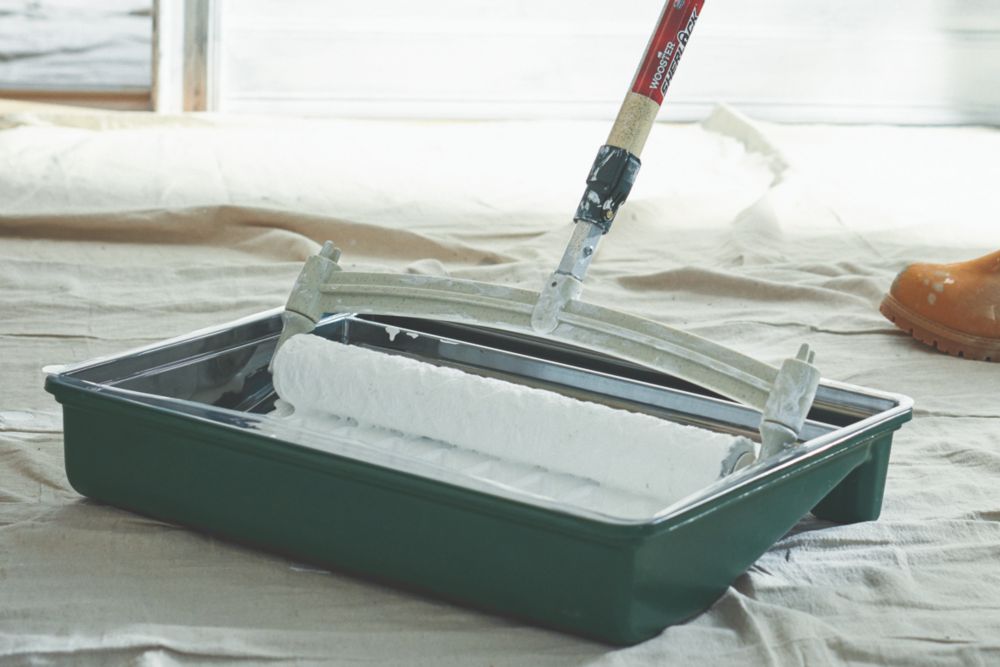
Longer and more robust than the standard 9-inch roller, an 18 inch roller can cover twice the area in the same amount of time—without doubling the effort. From contractors who manage large projects to homeowners looking for a quicker way to finish a room, the 18 inch paint roller has become a trusted ally in the painting world.
In this comprehensive guide, we’ll explore everything you need to know about this game-changing tool: what makes it special, when to use it, how to choose the right one, and best practices for getting top-tier results.
What is an 18 Inch Paint Roller?
An 18 inch paint roller refers to a roller frame and cover that is 18 inches wide—double the width of the standard 9 inch roller. Designed for speed and coverage, it allows painters to cover large areas in far less time.
They are most commonly used in commercial, industrial, and large residential settings. Whether you’re painting drywall, ceilings, floors, or even exterior siding, an 18 inch roller can dramatically increase productivity.
Advantages of Using an 18 Inch Paint Roller

1. Time Efficiency
The most obvious benefit is speed. An 18 inch roller can cut your painting time in half, especially on large, uninterrupted surfaces like ceilings, warehouse walls, or expansive flooring.
2. Better Coverage with Fewer Seams
A wider roller means fewer strokes and overlap lines. This can result in a smoother, more consistent finish, particularly when using latex paints or water-based coatings.
3. Reduces Fatigue
Though heavier than smaller rollers, the larger width means fewer trips up and down a ladder or scaffold. With proper technique and tools (like an adjustable extension pole), the 18 inch roller can actually reduce physical strain over time.
4. Versatility
You can use an 18 inch roller with a variety of nap lengths and roller cover materials, making it adaptable to many surfaces—from smooth drywall to textured stucco or concrete.
5. Professional-Grade Results
Designed for experienced painters and professionals, the 18 inch roller allows for precision when combined with high-quality roller covers and paints.
When to Use an 18 Inch Paint Roller
Not every project requires a larger roller. But in the right circumstances, it can be a game-changer. Here’s when it really shines:
-
Painting Large Walls or Ceilings: Great for open-concept homes, gyms, or warehouses.
-
Commercial or Industrial Projects: Ideal for spaces where speed and uniformity matter most.
-
Applying Primers or Base Coats: Perfect for quickly covering large areas before the finish coat.
-
Garage or Basement Floors: Works well when applying floor sealers, epoxy coatings, or stains.
-
Exterior Siding and Fencing: Efficient for wide horizontal surfaces.
Choosing the Right 18 Inch Paint Roller System
An 18 inch roller setup involves more than just the roller cover. Here are the components to consider:
1. Roller Frame
The frame must be built to hold an 18 inch roller cover securely, without sagging or bending under the added weight.
-
Heavy-Duty Metal Frame: Look for steel or aluminum construction.
-
Adjustable Ends: Some models allow for fine adjustments to fit various roller brands.
-
Compatibility with Poles: Ensure it connects easily to threaded extension poles for high or hard-to-reach areas.
2. Roller Cover
Choosing the right roller cover is just as important as the frame. Your selection should be based on the surface and type of paint being used.
Nap Sizes:
-
⅜ inch or ½ inch: Ideal for smooth or lightly textured walls and ceilings.
-
¾ inch or 1 inch: Best for semi-rough surfaces like stucco or block walls.
-
1¼ inch or more: For rough concrete, brick, or heavily textured surfaces.
Materials:
-
Microfiber: Delivers a fine, smooth finish with excellent coverage.
-
Polyester or Synthetic Blends: Good for general-purpose use and most paints.
-
Lambswool or Natural Fibers: Excellent paint pick-up, better for oil-based paints.
3. Extension Pole
Unless you’re painting floors, you’ll need a sturdy extension pole to get the most out of your 18 inch roller.
-
Threaded Tip: For secure attachment.
-
Adjustable Length: Helps reduce ladder use and strain.
-
Non-slip Grip: Makes long sessions more manageable.
Techniques for Using an 18 Inch Paint Roller
Using an 18 inch roller does require a bit more technique compared to smaller rollers. Here are some best practices:
1. Use the Right Paint Tray or Grid
Standard trays won’t cut it. Use a commercial paint bucket (5-gallon) with a roller grid insert for easier loading.
2. Don’t Overload the Roller
While an 18 inch roller holds more paint, too much can lead to drips, roller marks, or a messy finish. Dip it halfway and roll it across the grid a few times to evenly distribute the paint.
3. Apply in Sections
Work in 3×3 or 4×4-foot sections. Use a “W” pattern followed by horizontal strokes to distribute the paint, then finish with light vertical strokes to smooth out the surface.
4. Maintain a Wet Edge
Especially with latex paints, maintaining a wet edge prevents lap marks. Move quickly and blend each section into the last before it dries.
5. Clean or Dispose Appropriately
If you’re using high-quality roller covers, clean them after use with appropriate solvents. Cheaper covers or epoxy work often calls for disposables.
Common Mistakes to Avoid
Even experienced painters can run into issues with an 18 inch roller. Avoid these common pitfalls:
-
Skipping the proper frame: A weak frame can flex, making your lines uneven.
-
Using a standard tray: Oversized rollers need buckets and grids.
-
Wrong nap length: Too short, and you’ll miss texture. Too long, and you’ll leave marks.
-
No extension pole: Leads to fatigue and inconsistent pressure.
-
Neglecting cleanup: If reusable, clean thoroughly; don’t let paint dry into the fibers.
Who Should Use an 18 Inch Paint Roller?
Professionals:
-
Contractors
-
Industrial painters
-
Property maintenance teams
DIY Enthusiasts:
-
Experienced DIYers tackling large jobs
-
Homeowners painting basements or garages
-
Individuals working on multi-room renovations
If you’re painting an entire home, office, or industrial space, an 18 inch roller pays for itself in saved time and smoother finishes.
Recommended Brands for 18 Inch Paint Rollers
Several reputable brands manufacture high-quality 18 inch roller systems:
-
Wooster® Wide Boy™ System: Durable, easy to clean, compatible with Wooster covers.
-
Purdy® Colossus™: Great for large-scale jobs with excellent paint pick-up.
-
Linzer® Pro Series: Reliable and budget-friendly.
-
Shur-Line®: Offers contractor-grade performance at affordable prices.
Real-World Applications of 18 Inch Rollers
-
Epoxy Floor Coating in Warehouses: Provides smooth, even distribution.
-
Priming New Construction Homes: Cuts job time dramatically.
-
Painting Concrete Basement Floors: Easier than using brushes or small rollers.
-
Refinishing Commercial Ceilings: Fast coverage with minimal scaffolding.
In Conclusion
The 18 inch paint roller isn’t just a larger tool—it’s a smarter one for the right project. When you need speed, consistency, and wide-area coverage, there’s simply no better tool to have in your arsenal. It reduces time on-site, improves finish uniformity, and minimizes physical effort when used correctly.
From prepping new builds to applying coatings on commercial floors, this powerhouse roller brings both efficiency and professional-grade results to the table.
But remember, the quality of your finish doesn’t rely solely on size. If you’re applying high-performance coatings—like epoxy—the right roller makes all the difference. In that case, the best roller for epoxy is one that’s lint-free, shed-resistant, and able to handle thicker coatings—often a microfiber or phenolic-core roller designed specifically for resin-based applications.
When paired with the right tools and techniques, an 18 inch roller can deliver speed, quality, and a finish that’s built to last.




